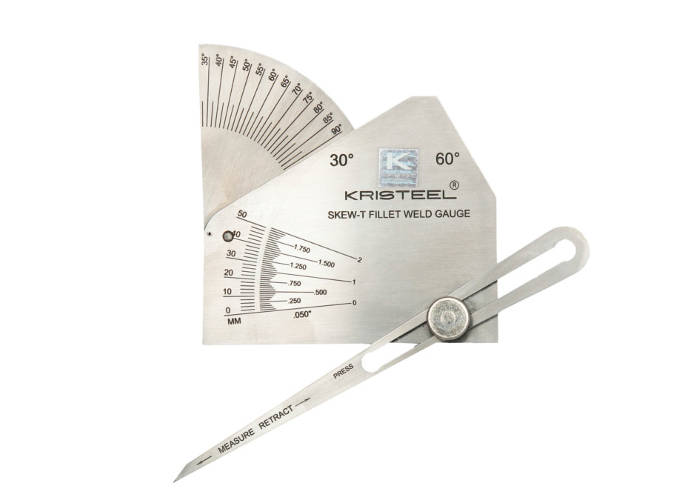The Ultimate Guide to Fillet Weld Quality Assurance: Making Sure Strength and Toughness in Your Welded Joints
In the world of welding, ensuring the strength and longevity of fillet welds is extremely important for the stability of bonded joints. As we get started on this expedition of fillet weld quality control, we will certainly reveal vital aspects that affect weld stamina, dive right into effective examination approaches, and go over methods for preventing usual weld defects.
Significance of Fillet Weld High Quality Control
Ensuring correct fillet weld top quality control is paramount in ensuring the architectural honesty and longevity of welded elements in numerous industries. Fillet welds are commonly used in architectural steelwork, bridges, stress vessels, pipelines, and various other vital infrastructure where the stamina of the weld is important to total safety and performance. Quality assurance measures such as visual evaluations, non-destructive testing, and adherence to welding treatments assist identify prospective flaws like absence of combination, incomplete penetration, damaging, or too much reinforcement.
Secret Factors Influencing Weld Toughness
Achieving ideal weld toughness calls for cautious consideration of numerous vital factors that influence the integrity and toughness of the bonded joint. The initial crucial variable is correct joint prep work, which involves cleansing the base metals to remove any kind of contaminants that could weaken the weld. Furthermore, the fit-up of the joint is vital to ensure proper penetration and fusion of the filler product.
The choice of the appropriate welding method and criteria also plays a significant function in establishing weld stamina. Factors such as warmth input, traveling speed, and electrode angle can influence the top quality of the weld. Maintaining the right interpass temperature level throughout multi-pass welding is crucial to protect against fracturing and make certain a strong bond between the layers.
Moreover, the selection of filler material and its compatibility with the base steels is vital for attaining high weld stamina. Utilizing filler product with the suitable mechanical homes can improve the general honesty of the weld. Post-weld warm therapy and appropriate examination strategies are essential actions in guaranteeing the strength and toughness of the bonded joint.
Examination Techniques for Weld Integrity

Another crucial assessment method is liquid penetrant screening, where a fluid dye is related to the weld surface - Gauge Fillet Weld. The dye seeps into any type of surface-breaking problems, making them noticeable under UV light. This approach is reliable for detecting defects that might not show up to the naked eye


Ultrasonic screening is likewise extensively made use of for examining Resources weld honesty. High-frequency you can try here sound waves are routed right into the weld, and any kind of disruptions in the acoustic wave pattern show prospective defects like splits or lack of combination.
These examination approaches play an essential role in guaranteeing the quality and reliability of welds, eventually adding to the total toughness and resilience of bonded joints in commercial setups.
Protecting Against Usual Weld Defects
In order to preserve the architectural honesty of welded joints in industrial applications, it is important to apply preventative measures to deal with usual weld flaws. One typical defect is absence of combination, where the filler product fails to bond properly with the base steels, bring about vulnerable points in the weld. This can be stopped by making sure correct warm control and using the appropriate welding method.
An additional constant concern is porosity, caused by gas entrapment in the weld steel during the welding procedure. To avoid this, it is vital to cleanse the base steels thoroughly, make use of dry electrodes, and keep a suitable welding environment with appropriate ventilation.
In addition, cracks in welds can jeopardize the joint's stamina. To prevent this defect, it is essential to manage the cooling price after welding, make use of preheating when necessary, and select suitable welding criteria.
Enhancing Weld Toughness With Appropriate Techniques
To strengthen the longevity and dependability of bonded structures, utilizing advanced welding strategies is critical. One important technique to boost weld durability is to make certain correct weld bead positioning. By placing the weld grain precisely within the joint, the weld's strength and resistance to tiredness can be significantly improved. Additionally, utilizing the appropriate welding specifications, such as voltage, present, and travel rate, is crucial for accomplishing a resilient weld. These parameters straight affect the weld's penetration, combination, and total high quality, adding to its long life.
Choosing the ideal filler steel and making certain the sanitation of the base steels can prevent inclusions and various other issues that can jeopardize the weld's durability. By applying these correct strategies, welders can make certain that their bonded joints display phenomenal stamina and toughness, fulfilling the greatest high quality requirements.
Final Thought
In conclusion, preserving top quality control requirements for fillet welds is vital for guaranteeing the toughness and durability of bonded joints. By recognizing the vital factors impacting weld toughness, utilizing examination approaches for weld integrity, stopping usual weld flaws, and employing proper strategies, welders can improve the overall longevity of their welds. It is essential to prioritize quality control procedures to create resilient and visit this page trustworthy welded joints.
In the world of welding, ensuring the toughness and sturdiness of fillet welds is critical for the honesty of bonded joints. As we begin on this exploration of fillet weld quality control, we will reveal crucial factors that affect weld stamina, dive into effective examination approaches, and review approaches for protecting against common weld defects.Attaining optimal weld stamina needs mindful consideration of different crucial factors that affect the stability and resilience of the bonded joint (Gauge Fillet Weld).In verdict, maintaining high quality control standards for fillet welds is vital for ensuring the strength and durability of welded joints. By understanding the vital variables influencing weld strength, utilizing inspection approaches for weld stability, avoiding typical weld issues, and employing appropriate techniques, welders can improve the overall resilience of their welds